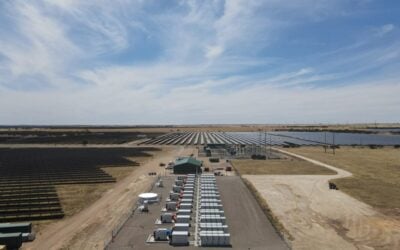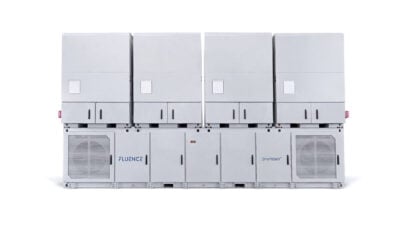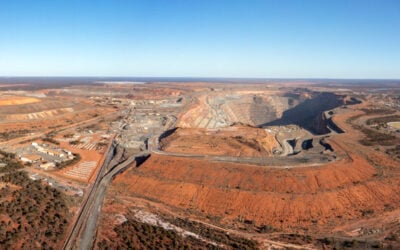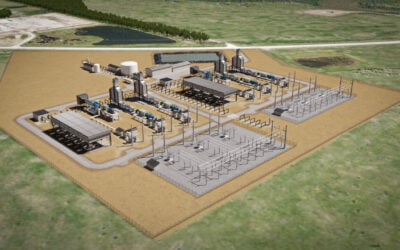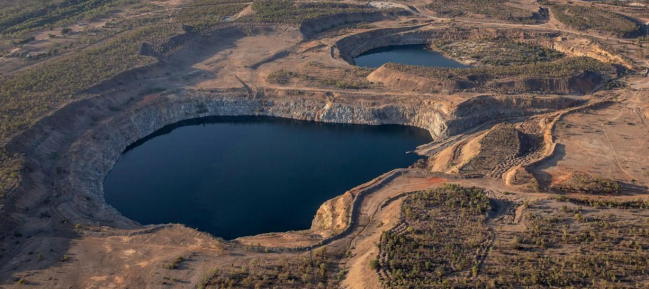
The 2GWh Kidston Pumped Hydro Project has been registered in the Australian Energy Market Operator’s (AEMO) Market Management System (MMS).
This marks the first pumped hydro energy storage (PHES) facility to enter Australia’s National Electricity Market (NEM) in nearly four decades.
The registration, completed by Genex Power on 18 November, establishes four distinct units in AEMO’s system: KIDSPHG1 and KIDSPHG2 for generation operations, and KIDSPHL1 and KIDSPHL2 for pumping functions.
KIDSPHG1 operates at a 125MW capacity, with the complete facility expected to deliver 250MW of generation and 250MW of pumping capacity once full technical specifications are published.
Try Premium for just $1
- Full premium access for the first month at only $1
- Converts to an annual rate after 30 days unless cancelled
- Cancel anytime during the trial period
Premium Benefits
- Expert industry analysis and interviews
- Digital access to PV Tech Power journal
- Exclusive event discounts
Or get the full Premium subscription right away
Or continue reading this article for free
Located 285km west of Townsville in Queensland, the project represents a significant milestone for Australia’s long-duration energy storage (LDES) capabilities. The facility utilises two existing mining pits from the former Kidston Gold Mine, transforming the site into a renewable energy storage hub that can provide grid stability services and energy arbitrage across extended timeframes.
EnergyAustralia holds dispatch rights for the facility through a Binding Energy Storage Services Agreement with project developer Genex Power.
The commercial arrangement extends for up to 30 years and includes an option for EnergyAustralia to acquire the project, providing the energy retailer with substantial long-duration storage capacity to support its renewable energy portfolio.
As previously reported by Energy-Storage.news, the Kidston facility achieved financial close in 2022 with backing from the Australian Renewable Energy Agency (ARENA) and the Northern Australia Infrastructure Facility (NAIF).
The Kidston project’s technical configuration enables it to operate as both a generator and load within the NEM, providing essential grid services including frequency regulation, voltage support, and energy arbitrage.
The project can absorb excess renewable energy during periods of high solar and wind generation, then dispatch stored energy during peak demand periods when electricity prices reach maximum levels.
Construction activities at Kidston have progressed through multiple phases, with the project incorporating lessons learned from international pumped hydro developments. The facility’s design optimises the existing topography and water resources while minimising environmental impact through the repurposing of former mining infrastructure.
The project’s registration occurs as Australia’s electricity grid faces increasing challenges from renewable energy intermittency and the retirement of coal-fired power stations. Long-duration energy storage technologies like pumped hydro provide critical grid stability services that shorter-duration battery systems cannot economically deliver over extended periods.
Queensland’s pumped hydro development landscape has experienced a turbulent year. While the state government committed AU$48 million (US$31.22 million) to the 5.7GWh Borumba pumped hydro plant, it simultaneously cancelled the world’s largest pumped hydro project at Pioneer-Burdekin due to cost concerns and environmental considerations.
The state’s energy storage strategy has since been revised to emphasise shorter-duration technologies, with plans for 4.3GW of short-duration energy storage by 2030 alongside selective pumped hydro developments.
Other major Queensland pumped hydro projects, including the 9.6GWh Big G project, continue to seek regulatory approval.
Battery storage developments complement pumped hydro expansion
The Kidston registration coincides with the continued deployment of battery energy storage systems (BESS) across Australia’s renewable energy landscape.
Potentia Energy has achieved a significant milestone at its Quorn Park Solar Hybrid Project, located approximately 10km northwest of Parkes, New South Wales, with the on-site arrival of a 20MW/40MWh battery storage system.
The Quorn Park BESS comprises 16 units, each weighing around 27 tonnes, and forms part of a 98MW solar and 20MW battery hybrid development. The project is progressing toward energisation, with full operations planned for 2026.
The developer stated that the battery system will enhance local grid stability, store excess solar energy, and ensure clean energy availability during peak demand periods.

